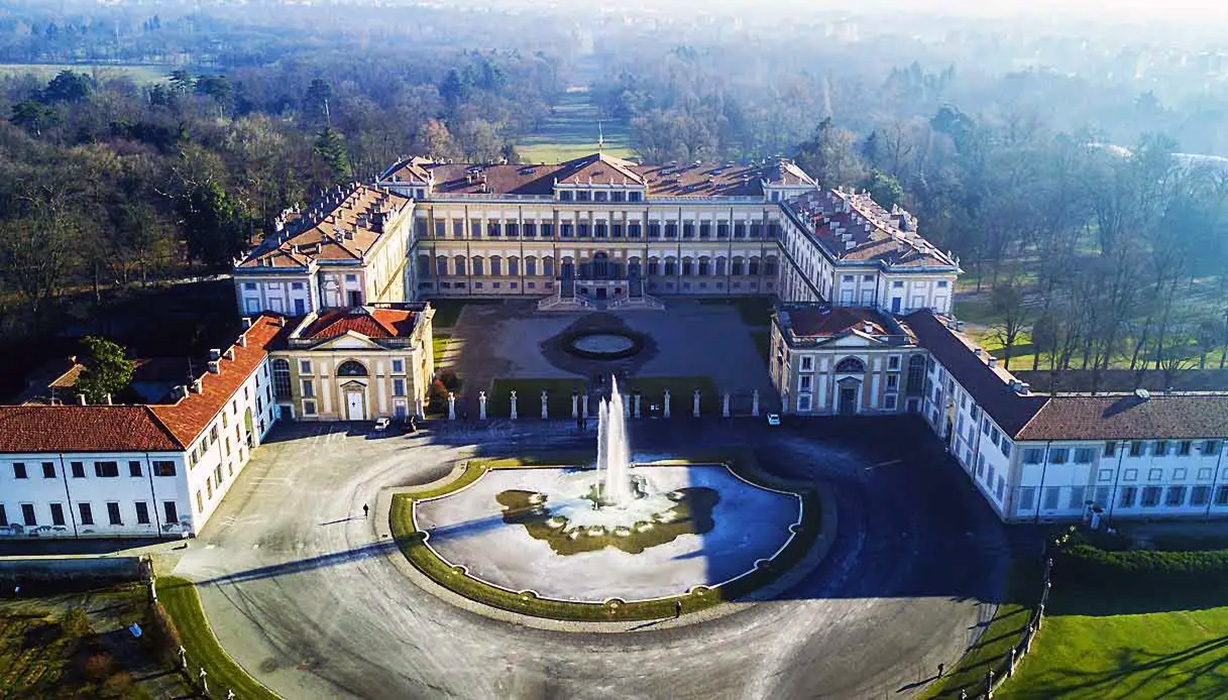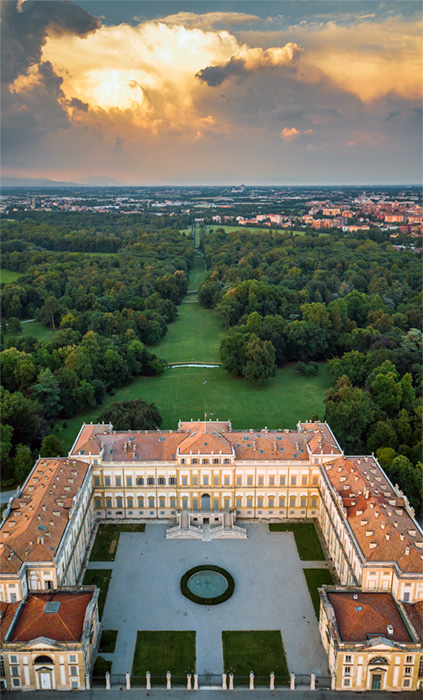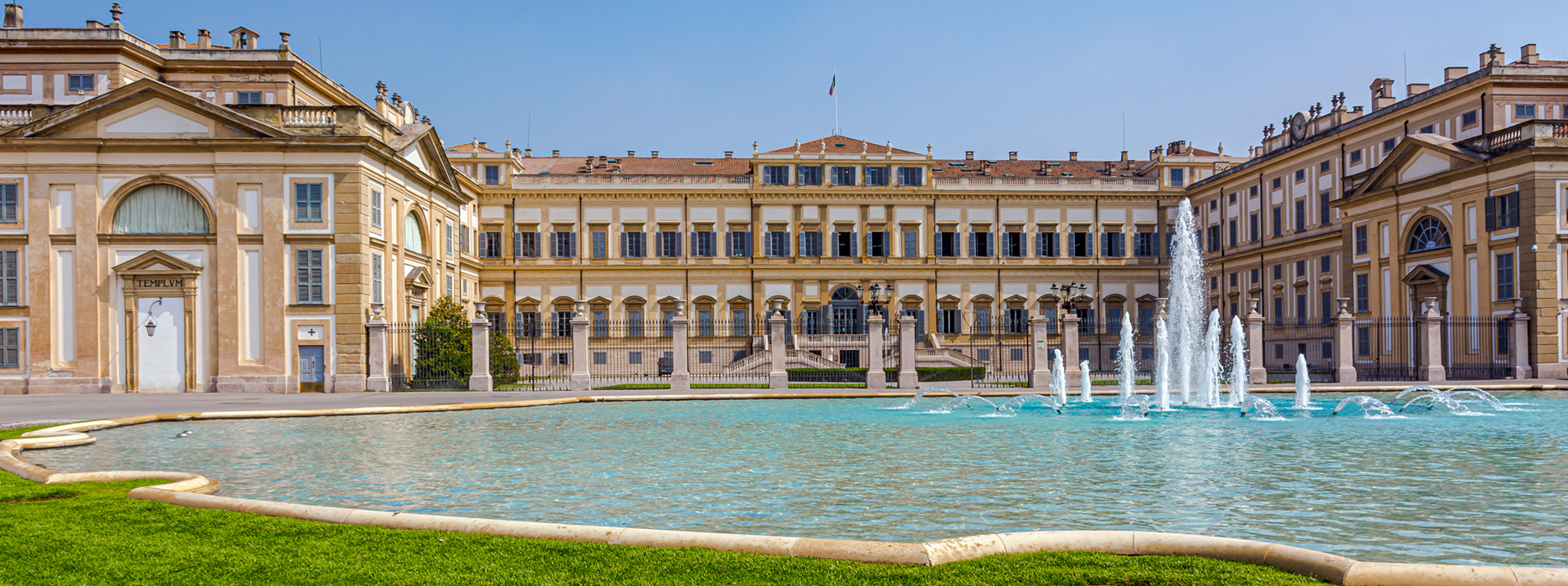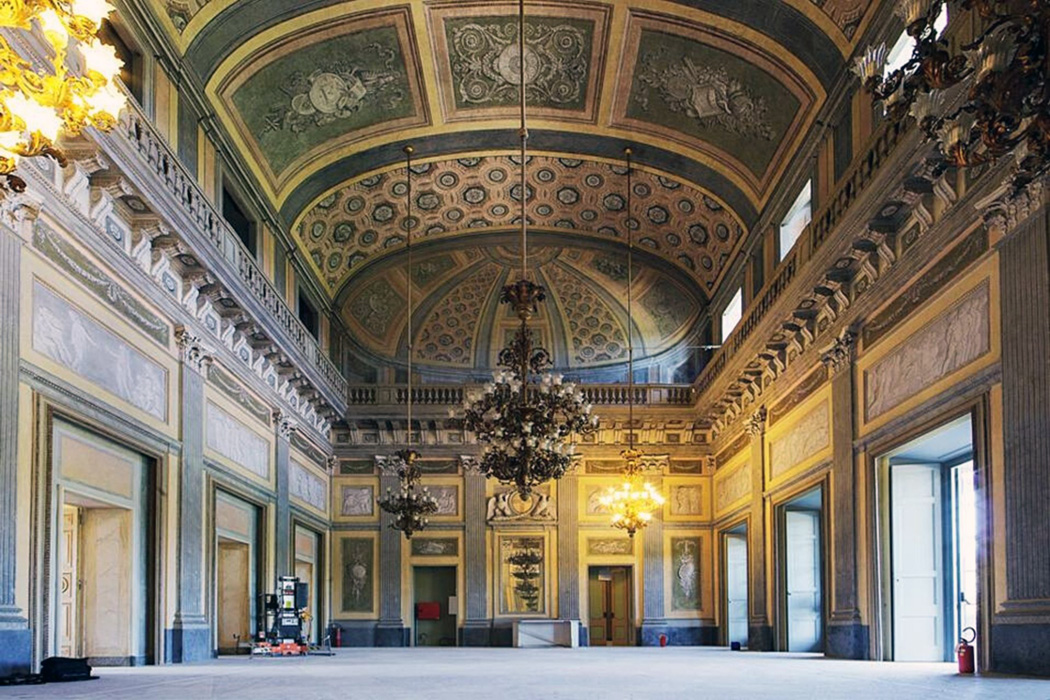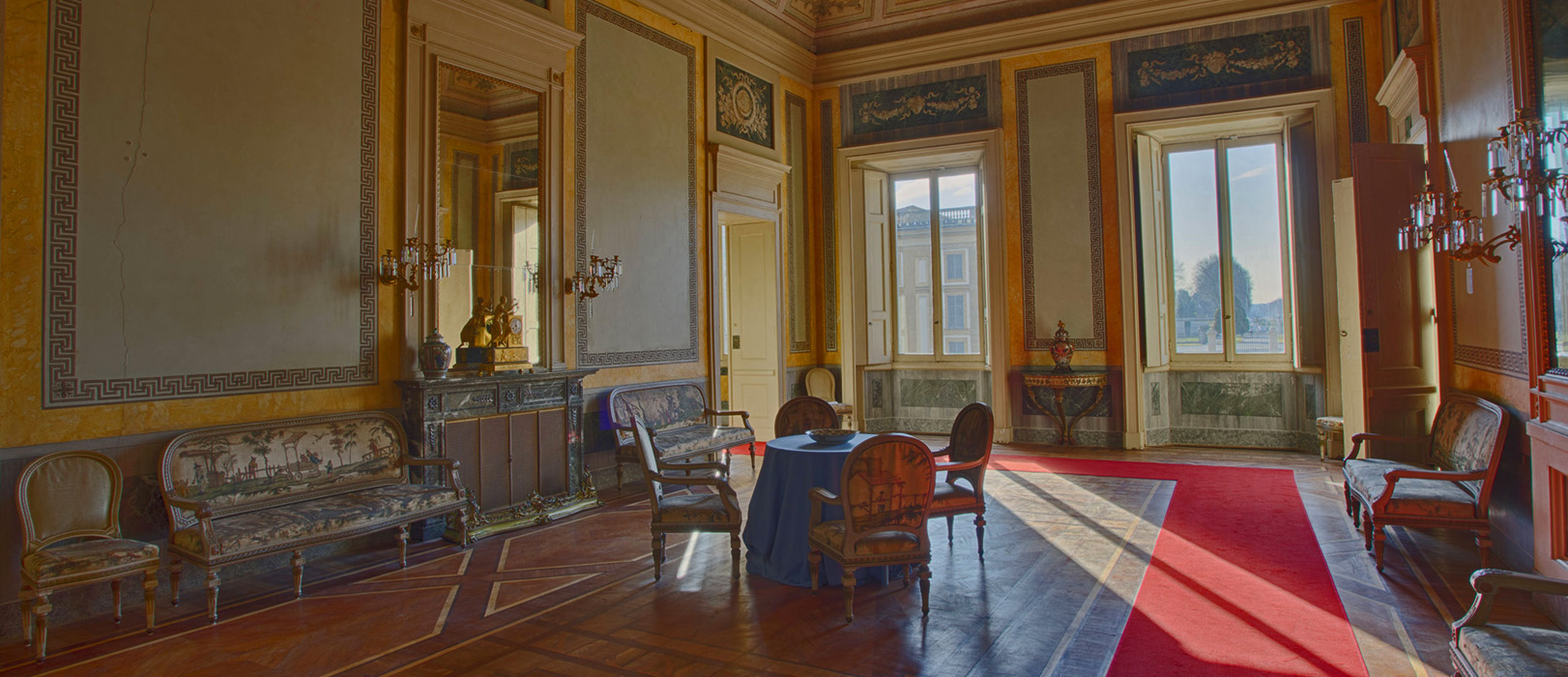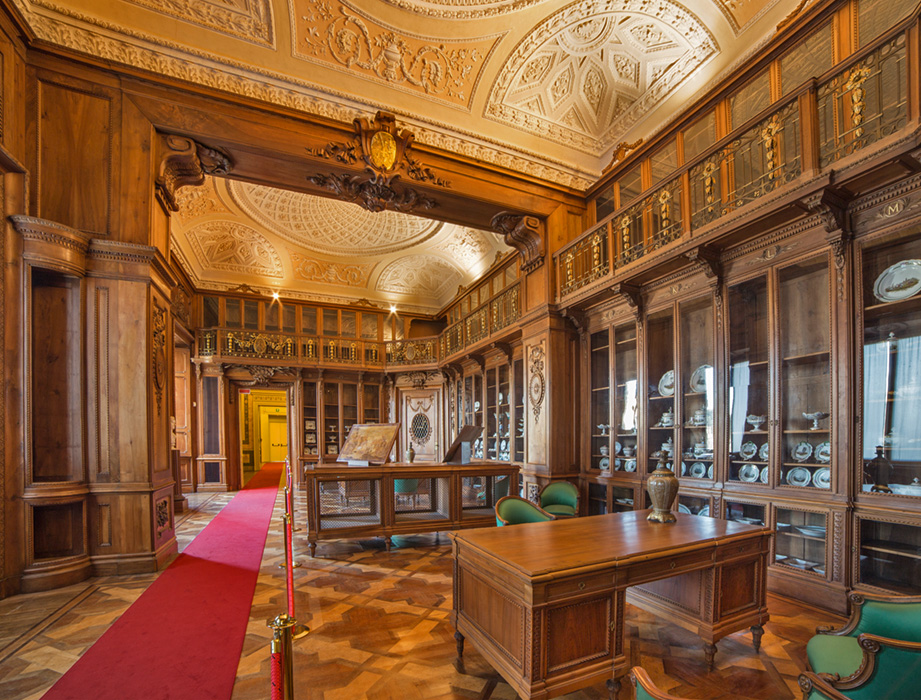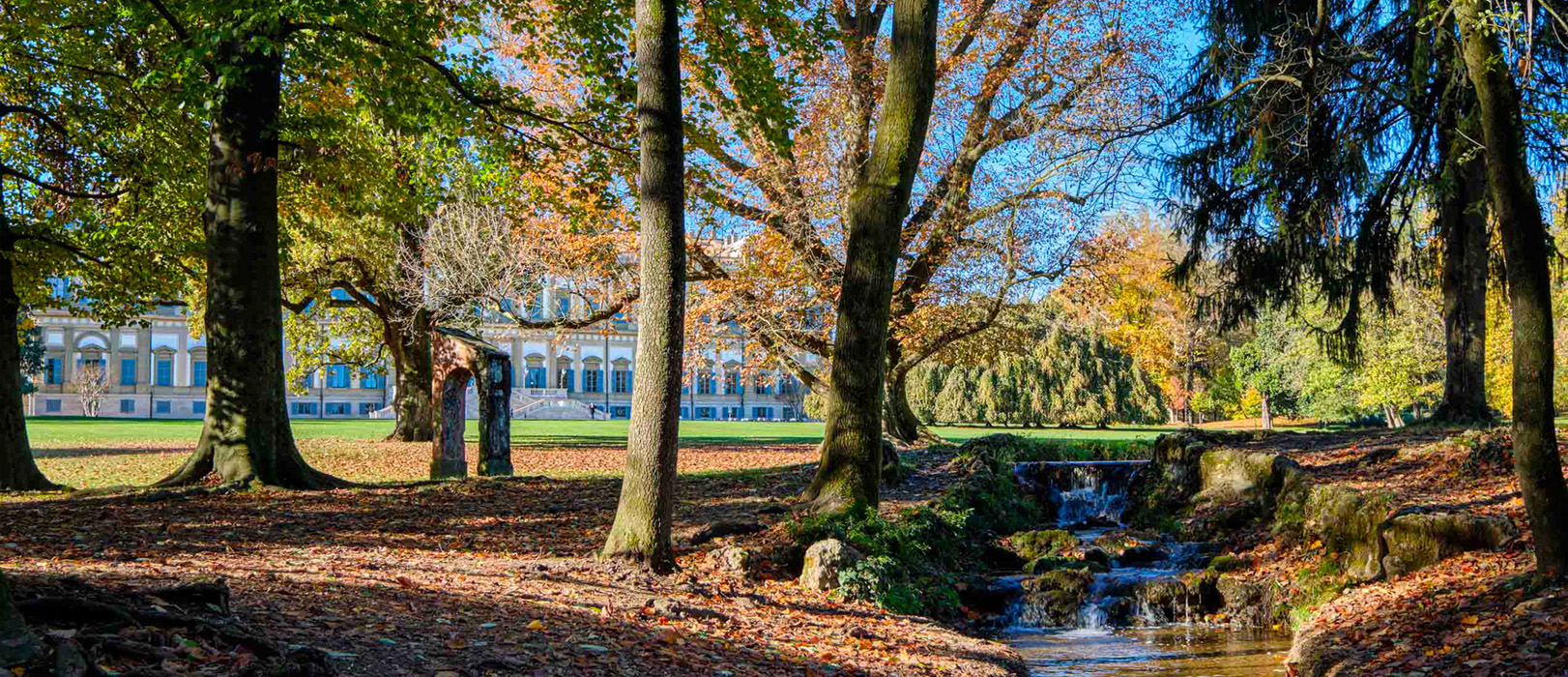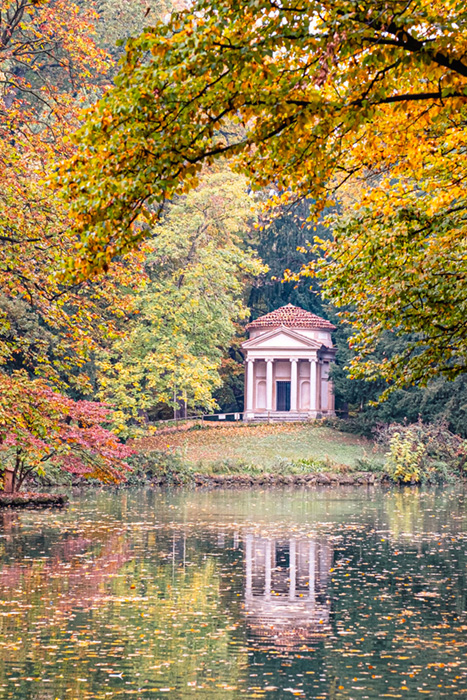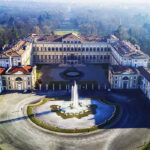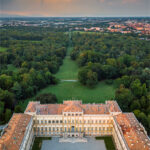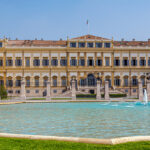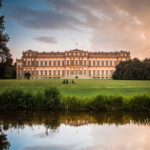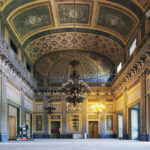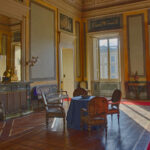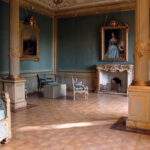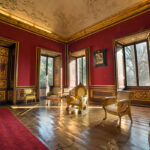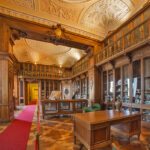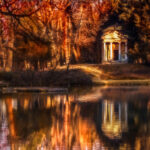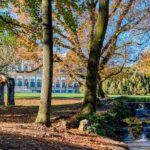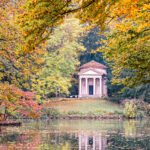Monza – The Villa Reale, Gardens and Park
The history of Villa Reale di Monza begins with the arrival of the new governor, Archduke Ferdinand of Habsburg, son of Empress Maria Theresa of Austria, in Milan in 1771. The new governor of Lombardy, together with his wife Beatrice d’Este, organized a court where Lombard patricians could find their place and reason for being. The proximity to the capital, the particularity of the territory characterized by ancient alluvial terraces, the proximity to numerous noble delight villas, and the rich valuable vegetation were the elements that led to the choice of Monza as the location for summer vacations.
The architect Giuseppe Piermarini was appointed to build the Villa in 1777, and he completed the work in just three years. It was used by the archduke as his own countryside residence until the arrival of the Napoleonic armies in 1796. The Villa then underwent a period of decay until the coronation of Napoleon in 1805 and the appointment of his stepson Eugenio di Beauharnais as viceroy, who chose it as his summer residence.
The fall of Napoleon returned the Villa Reale to the hands of the Austrians, who left it in a state of relative abandonment for several years until it was taken over by the viceroy of Lombardy-Veneto, Giuseppe Ranieri, in 1818. Occupied by Radetzky’s military in 1848, the palace enjoyed a splendid court from 1857 to 1859 during the brief stay of the last representative of the House of Austria, Maximilian I of Habsburg, brother of Franz Joseph.
When Lombardy-Veneto was annexed to the Kingdom of Piedmont, the history of Villa Reale inevitably intertwined with the destiny of the Savoy, becoming the preferred residence of Umberto I and returning to its original role as a holiday home. The king entrusted architect Achille Majnoni d’Intignano to decorate, restore, and improve it according to the taste of the time. Thus, in those years, the Villa underwent a radical transformation of many of its parts.
The phase of deep change was abruptly interrupted by the assassination of King Umberto on July 29, 1900, in Monza, by the anarchist Gaetano Bresci. Following the tragic event, the new king, Vittorio Emanuele III, abandoned Villa Reale, closed it, and transferred most of the furnishings to the Quirinal Palace. In 1919, it was donated to the State Domain.
The Villa was used for various purposes, hosting four exhibitions of Modern Decorative and Industrial Art from 1923 to 1930 and several other exhibitions. In 1934, through a Royal Decree, Vittorio Emanuele III gave the Villa to the municipalities of Monza and Milan. The events of the immediate post-World War II period caused occupations, further looting, and decay of the monument.
In 2003, the Lombardy Region and the Municipality of Monza, joint owners of the Villa Reale di Monza complex, launched an international design competition for its recovery and enhancement, as well as its gardens. In 2003, the conservative restoration works of the nine reception rooms of the first noble floor began, and they were completed in 2007 with an extraordinary opening to the public. On July 30, 2008, a strategic agreement was signed for Villa Reale and Monza Park.
The agreement concerned the restoration and subsequent cultural enhancement of Villa Reale and Monza Park, and the entire monument complex was intended for cultural and high institutional representation purposes. The restoration works were completed with a public ceremony on June 26, 2014.
The gardens of the Archducal and then Royal Villa of Monza were designed by architect Giuseppe Piermarini between 1778 and 1783, initially with a formal layout inspired by the French fashion, according to a large geometric and regular design, later expanded to offer a unified perception with the surrounding landscape.
While the geometric parterre was the most suitable solution to enhance the power and magnificence of the prince, the novelty of the new English style demonstrated the designer’s and Ferdinand of Habsburg’s commitment to international stylistic and cultural trends.
The importance of the gardens and their immense cultural value, motivated by the intervention of an exceptional professional assisted by gardeners sent from Vienna by the will of Maria Theresa of Austria, is evidenced by their iconographic success. The restorations of details or overall views made by painters and engravers since their creation found particular impetus thanks to the awareness of their importance as an Italian cornerstone of the new style, supported by the cultural policy promoted by the Habsburgs and the commission of Eugenio di Beauharnais. From the 1820s, thanks to Viceroy Ranieri, the gardens, then privately owned by the Habsburgs, were accessible to the public, except for short periods.
The Monza Park was established on September 14, 1805, by Emperor Napoleon with the aim of creating a model agricultural estate and a hunting reserve. Construction began in 1806, under the orders of Viceroy Eugenio di Beauharnais, on land to the north of the Villa and the Royal Gardens, which had been established by Maria Teresa d’Austria back in 1777.
In a letter, Napoleon’s mother, Giuseppina Bonaparte, asked her son Eugenio to build a park larger than the one at Versailles. Her wish was granted as while Versailles covers an area of 250 hectares, the Monza Park has a surface area of over 700 hectares.
The first mention of the establishment of the Monza Park is found in the 3rd Constitutional Statute of June 1805, which refers to a considerable sum of Milanese lire allocated to “the construction of the two estates of Monza and the Ticino park.” In September of the same year, an imperial decree was issued to build the park in the Monza area, with the aim of creating a model agricultural estate and hunting reserve. During those years, Luigi Canonica, of Swiss origin and a student of Piermarini, was the “National” architect of the French court, and he was entrusted with the project, which he himself considered in a letter as an “extraordinary task.”
The new park extends northward, almost reaching the first hills of the Brianza region. Around 1808, the Monza Park became the largest enclosed park in Europe, with a 14-km long perimeter wall. Within the walls, there were agricultural fields, roads, farms, villas, and pre-existing gardens, all of which are now part of the complex, almost a compendium of Lombardian agricultural territory. The meaning of this operation was mainly political: while the construction of a park like Versailles would have caused discontent among the local population, the Monza Park, maintained as an agricultural estate, with botanical greenhouses, vegetable gardens, and orchards, was partially justified.
Canonica molded and modified existing structures, tearing down the farms of “falling structure” and preserving important landscape complexes such as the Mirabello and Mirabellino villas, transforming and enhancing them with neoclassical style elements in connection with that of the Royal Villa. Three main areas were identified, corresponding to different natural environments:
- The area near the Royal Villa, to the south, kept as a garden and open countryside;
- The area to the north, definitely the most suitable for the purpose, planted as a forest, the so-called “Bosco Bello,” mainly functional for hunting;
- The strip along the Lambro River, in a lower position than the villas and the central agricultural zone, maintained with riparian vegetation from a wetland area.
To connect the different areas of the Park, Canonica created a main North-South axis, the Mirabello avenue and its continuation, the Gernetto avenue, which leads to the “Rondò della Stella” in the center of the “Bosco Bello.” Transverse to this avenue, a network of secondary avenues distributes the paths throughout the Park. The structuring of the vast agricultural and forested territory, with the adaptation and transformation of the farms and important architectural villas within the Park’s territory, the construction and rearrangement of wide straight tree-lined avenues, the modeling of the terrain and the adaptation of the water system to the Park’s new needs, gave birth to an unprecedented Park, still today unique of its kind.
The period from 1807 to 1900 saw the succession of numerous public and private managers of the Park who, while exploiting the structure, kept it intact. In May 1814, the Austrian troops returned to Monza; Ranieri, appointed Viceroy, took possession of the Royal Villa and the Park. As a political move to gain popular favor, the Park was opened to the public, but only at predetermined times, “every Sunday from noon to the Ave Maria in the evening.” In reality, from 1820 to 1860, the Habsburg administration was focused on achieving complete economic self-sufficiency and maximum profitability, all while improving and enriching the structure.
In August 1858, the Park was closed again to the public, in view of a radical transformation program for which the Austrians planned to reduce, following the example of the large German parks, the agricultural estate to a natural area with only meadows and forests, leaving the animals free. The project fell through, and in 1860, the Park passed to the Savoia family, who reopened it to the public in 1864. King Umberto I stayed in Monza for a long time, mainly due to his love for a woman, Countess Litta, whose villa in Vedano was adjacent to the royal estate. Thanks to the monarch, the Park maintained its original splendor until July 29, 1900, when Umberto was assassinated in front of the Royal Villa.
Umberto I’s son, Vittorio Emanuele III, did not care for the Monza estate and sold it in 1919 to the National Combatants Association. Seeking immediate profits and mainly to meet management expenses, the association proposed various design solutions, including the construction of the racetrack (1922), the racecourse (1923), and the golf course (1928).
In 1920, the Park was sold to a consortium formed by the Municipalities of Milan and Monza and the Società Umanitaria. In turn, the consortium granted significant portions of the Park to third parties.
In the last decade, following some safety interventions on the racetrack, the Lombardy Region, in collaboration with the interested Municipalities, the Lambro Valley Park, and the Milan Monuments Superintendence, has developed and funded extraordinary interventions for the redevelopment of the Park and its structures, including the rehabilitation of the forests, the restoration of historic villas and farms, and the improvement of the Park’s usability.
Today, the Villa, with the Royal Gardens and the Park, is managed by the Villa Reale and Monza Park Consortium, an entity owned by the institutions that own Villa Reale and the Park: the Ministry of Culture, the Lombardy Region, the Municipality of Monza, and the Municipality of Milan. Although not owning any property inside the monumental complex, the Milan, Monza Brianza, Lodi Chamber of Commerce and Assolombarda have also joined the Consortium. The Consortium was established to ensure, through the unitary management of all immovable and movable assets related to the Royal Villa and all its dependencies, the cultural enhancement of the vast monumental complex.

